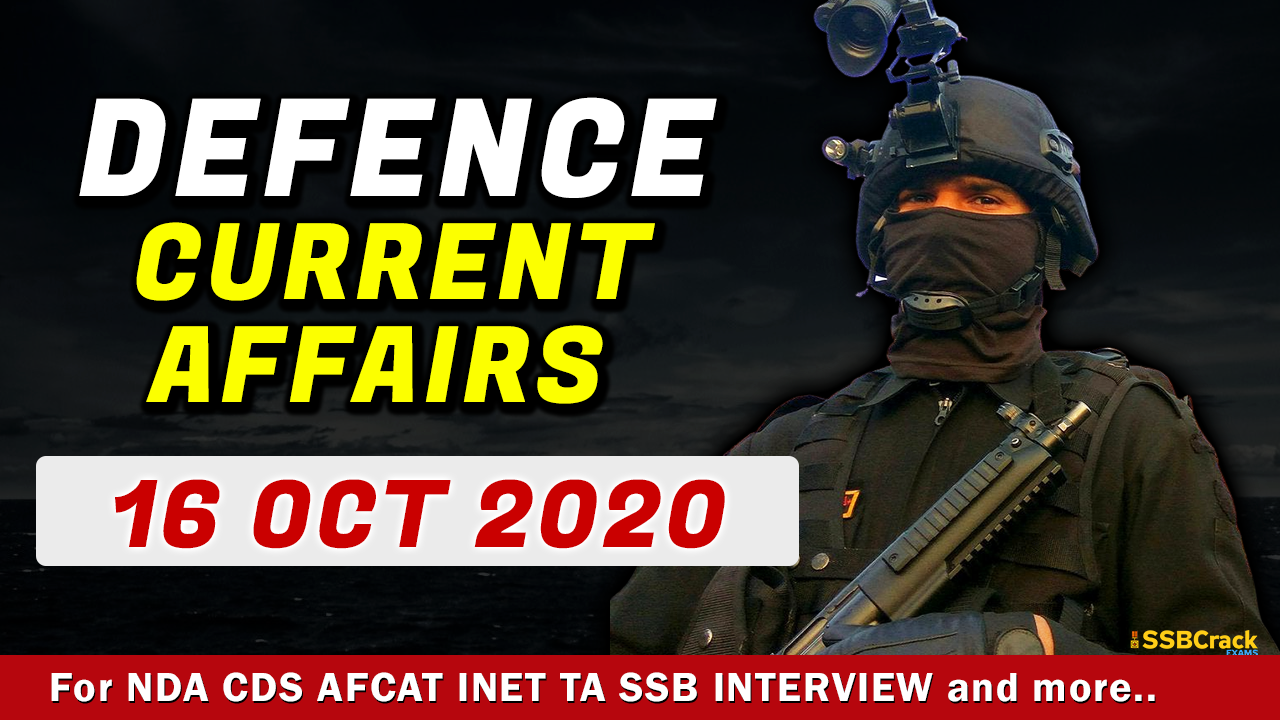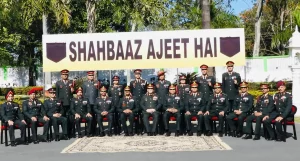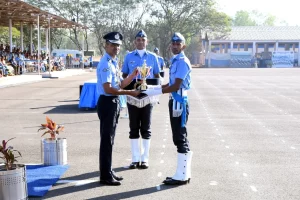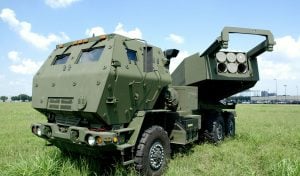36th Raising Day of National Security Guard
- An elite counter-terrorism unit under the Indian Ministry of Home Affairs (MHA).
- Founded: 15 October 1984 (through an Act passed by parliament)
- Motto: सर्वत्र सर्वोत्तम सुरक्षा (Omnipresent omnipotent security)
- Minister responsible: Amit Shah, Ministry of Home Affairs
- DG NSG: Surjeet Singh Deswal
- Regional Hubs: Mumbai, Kolkata, Hyderabad, Chennai, Gandhinagar
- Significant Operations: Black Thunder, Ashwamedh, Combat missions in Jammu and Kashmir, Vajra Shakti, Black Tornado.
- Headquarters: At Mehram Nagar, Palam, New Delhi.
- There are 2 Special Action Groups – 51 and 52 SAGs.
- There are 3 Special Ranger Groups (SRG) – 11, 12 and 13.
- SAG members are drawn from the Indian Army.
- SRG members are drawn both from the border guarding forces i.e. BSF, ITBP and SSB and Internal Security Forces I.e. CRPF, CISF and Assam Rifles.
How to become NSG Commando?
The MHA has laid down certain pre-selection criteria for recruiting NSG Commandos in the force:
- Service Experience Factor – A minimum of 3 years in Indian Army & 5 years in case of Police.
- Age Criteria – The candidate must be less than 35 years
- Physical Standards
- Medical Standards
- Service Report
Army chief MM Naravane to get honorary rank of General of Nepali Army
- Indian Army Chief General Manoj Mukund Naravane is set to get the honorary rank of General of the Nepali Army in an investiture ceremony during his visit to Kathmandu in the month of November.
- According to the Nepal Army spokesperson, General Naravane will visit Nepal in November this year.
- “General Manoj Mukund Naravane, Chief of the Army Staff, Indian Army will visit Nepal in the month of November this year. The visit was approved by the Government of Nepal on February 3, 2020 but was postponed due to lockdown in both the countries,” the Army spokesperson said in a release on Wednesday.
- “Her Excellency Mrs. Vidya Devi Bhandari will confer the honorary rank of General of the Nepali Army to General Naravane in an investiture ceremony during his visit,” the release further stated.
- Earlier, the visit was scheduled for February 3 but was postponed due to Covid-19 induced lockdown in both the countries.
- This is set to be the first high-level visit to Nepal from New Delhi after Kathmandu issued a new political map showing Indian territories — Kalapani, Lipulekh and Limpiadhura, as part of Nepalese territory.
India can have complete hypersonic cruise missile system in 4-5 years: DRDO
- In a major boost for India’s missile strike capabilities, the Defence Research and Development Organisation (DRDO) has said that it can develop a complete hypersonic cruise missile system in the next four to five years which will have the capability to strike its targets at speeds at least double than that of world’s present fastest BrahMos supersonic cruise missile.
- The DRDO test fired the Hypersonic Technology Demonstrator Vehicle (HSTDV) on September 7 which is expected to lay the foundation for the development of a hypersonic cruise missile system.
- Giving details of the HSTDV testfiring to ANI, DRDO chief Dr G Satheesh Reddy said the cruise missiles are the one which flies at a lower altitude.
- “In that cruise missile, we have varieties called Subsonic cruise missile, Supersonic cruise missile and then hypersonic cruise missiles. The hypersonic cruise missiles are the one which actually travels at six times, seven times..eight times..more than that the speed of sound which is approximate about 300+ metre per second on the surface of the earth,” he said.
- “This one what we have attempted has got a scramjet engine, which works at the hypersonic speed breathing the air in the atmosphere, taking the oxygen in the atmosphere and then burns it and that happens at the hypersonic speed,” he added.
- Reddy said the scramjet engine developed by the DRDO has been tested for a specific time to see how it is working.
- “It has been scramjet vehicle, which is the hypersonic cruise vehicle, has been taken to a designated height and released at the specific Mach number and then the engine has been ignited and the engine has been tested,” he said.
- The DRDO chief said this was the first time that India’s premier defense research agency has done such an experiment for a good amount of time and “it has successfully worked and hence it paves the way for us to work on these technologies for longer ranges.”
- Asked how long will take for a hypersonic cruise missile system to be fully developed, Reddy said, “It will take probably about four to five years for us to work on all these things and realise a complete missile system working for some good amount of range.”
- On the comparison with the speeds of the further hypersonic cruise missile with the existing BrahMos supersonic cruise missile system, he said it will be at least double of that speed at around six to seven Mach.
- The BrahMos supersonic cruise missile is considered to be the world’s fastest cruise missile at the moment with speeds of around 2.8 Mach.
- Asked about the successful test of the BrahMos on September 30, he said the missile was tested with heightened indigenous content and it has proved itself.
- The BrahMos Extended Range Missile can be launched at targets beyond 400 kms and can strike its targets at longer ranges than before. It was earlier used for striking targets slightly less than 300 kms.
Indian Air Force team in France to prepare to induct more Rafale jets
- As it prepares to induct a second batch of Rafale jets, the Indian Air Force has sent a team of officials to France to oversee the logistical issues and review the training of a hand-picked group of pilots at the Saint-Dizier air base there, officials said on Thursday.
- The 2nd batch of 4 Rafale jets is expected to arrive in India in the next four weeks.
- The first batch of five Rafale jets arrived in India on July 29, nearly four years after India signed an inter-governmental agreement with France to procure 36 of these aircraft at a cost of Rs 59,000 crore.
- Several teams from the IAF have visited France since January to oversee the progress of the Rafale project including integration of India-specific enhancements and weapons systems, the officials said.
- The IAF’s Rafale project management team has an office in Paris headed by a Group Captain-rank officer. The team is tasked with overseeing the production timelines as well as coordinating training of the crew.
- A team of experts headed by assistant chief of air staff (projects) reached France earlier this week to coordinate logistical issues as well as training of pilots and technicians, said the officials.
- The first batch of Rafale jets was finally inducted into the IAF on September 10.
- Chief of Air Staff Air Chief Marshal RKS Bhadauria on October 5 said the induction of all 36 Rafale jets will be completed by 2023.
- Ten Rafale jets have been delivered to India so far and five of them stayed back in France for imparting training to IAF pilots.
- Known for their air-superiority and precision strikes, the Rafale jets are India’s first major acquisition of fighter planes in 23 year after the Sukhoi jets were imported from Russia.
- The newly inducted fleet has been carrying out sorties in eastern Ladakh where Indian and Chinese troops are engaged in a bitter border row for over five months.
- A group of IAF pilots is currently undergoing training on Rafale jets at the Saint-Dizier air base in eastern France.
As Xi Jinping asks troops to prepare for war, US appoints special officer for Tibet
- A day after President Xi Jinping called on Chinese troops to prepare for war, the United States appointed a senior official as its special coordinator for Tibetan issues.
- Tibet, which has been under Chinese occupation since 1950, remains a sensitive issue for Beijing diplomatically. The Chinese Communist Party regime has persistently refused to engage with the US coordinator on the Tibet issue.
- The Tibetan government in exile, established in India, is headed by the Dalai Lama.
- Since the beginning of President Donald Trump’s term in 2017, the position for the US special coordinator for Tibetan issues was vacant.
- On Wednesday, US Secretary of State Mike Pompeo announced that Robert Destro, assistant secretary of state for democracy, human rights and labour, would assume the additional charge.
- “Destro will lead US efforts to promote dialogue between the People’s Republic of China and the Dalai Lama or his representatives; protect the unique religious, cultural, and linguistic identity of Tibetans; and press for their human rights to be respected,” Pompeo said in a statement.
- He added that the US remains concerned with the PRC’s “repression of the Tibetan community.”
- The Trump administration in the past has threatened to restrict visas for the Chinese officials responsible for human rights abuses in Tibet and blocking diplomatic access to the region.
- A day before the US announced special coordinator for Tibet, Xi while visiting the People’s Liberation Army Marine Corps in Chaozhou city, asked the troops to “put all their minds and energy on preparing for war” and “maintain a state of high alert.”
- The statement assumes significance in view of the India-China tense face-off along the Line of Actual Control (LAC) in Ladakh since May this year and the US pushback against China’s aggressive stand on South China Sea. China has been facing stiff resistance from India, the US and several other nations over its expansionist policies.
- The US government’s appointment of a special coordinator for Tibetan issues, has potential to further escalate the crisis between the two superpowers which are already warring over the terms of their bilateral trade, China’s curbing of freedoms in Hong Kong, threats against democratic island of Taiwan, abuse of human rights of Uighurs in Xinjiang and mishandling of the coronavirus pandemic.
QUICK REVIEW
- Army chief MM Naravane will get honorary rank of General of which nation’s army?
- Nepal
- Tibet
- Sri Lanka
- Bhutan
ANSWER: A
- US Special Officer for Tibet
- Kenneth I. Juster
- Jamie D. McCourt
- Robert Destro
- Paul W. Jones
ANSWER: C
- From which of the following organizations, the SRG members of the NSG are not drawn:
- BSF
- ITBP
- CISF
- Indian Army
ANSWER: D



















